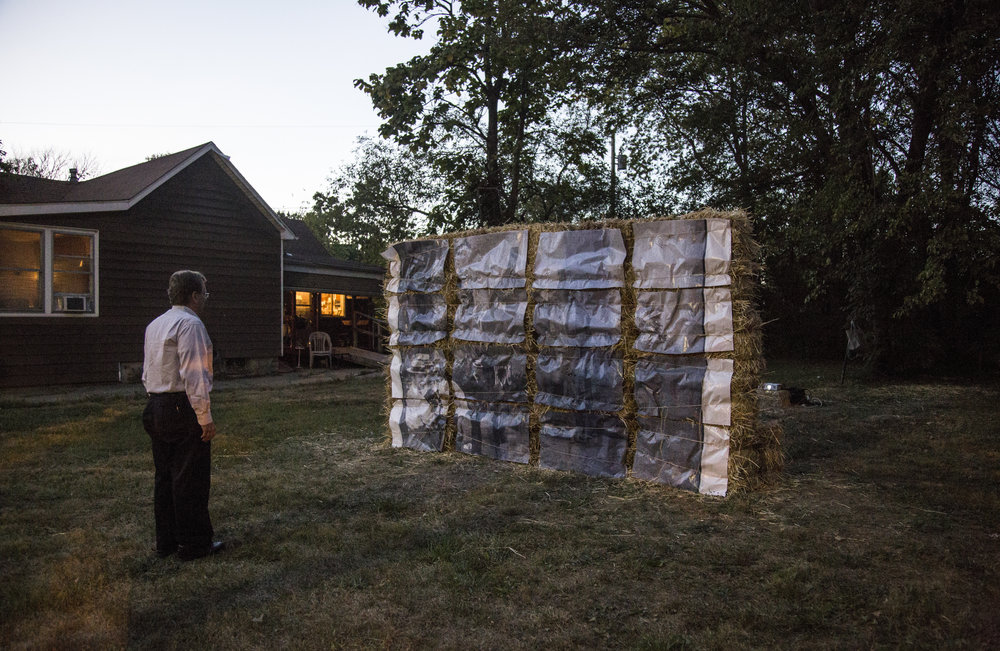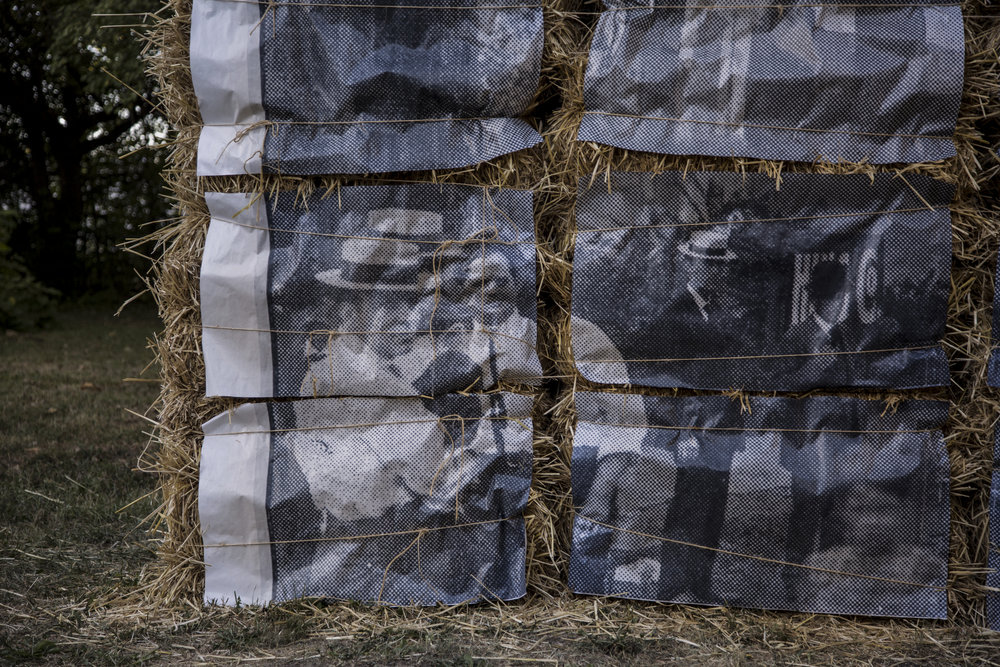Witness 2017
30 bales of hay, reproduction of image from 1908 Springfield Race Riot, baling twine.
*Image courtesy of U of I Springfield Archives and Sangamon Valley Collection.


The 1908 Springfield Race Riots left 64 homes and business in ashes, and at least seven people dead. The riots caused a Black exodus from the city – particularly from neighborhoods here on the north side of town – but were also a catalyst for the formation of the NAACP.
Witness accesses that local history through the research and re-presentation of archival material. The image itself has been preserved as a record and a form of testimony; as a reproducible document, it bookmarks an important and overlooked aspect of local history that reverberates through the present.
The installation is positioned in a void that speaks to the displacement of people and history, and the ghostly absence of site, of home, of memory, and of justice that are all attached to that loss. Further, the viewer is placed between different modes of looking – to look at what is visible versus vanished, to look at others looking, to be looked at while looking. Each of these possibilities prompts a further reckoning with the structures of white supremacy and racial violence that underpin the race riots that occurred here: are we actively perpetuating this systemic violence, passively condoning it, or creating and enacting testimony that could help to dismantle it?
-Text in collaboration with Greg Ruffing, Curator
Terrain Biennial, Springfield, IL